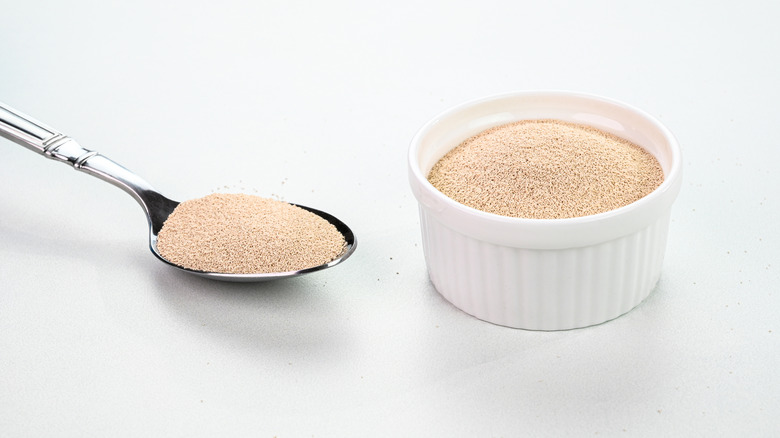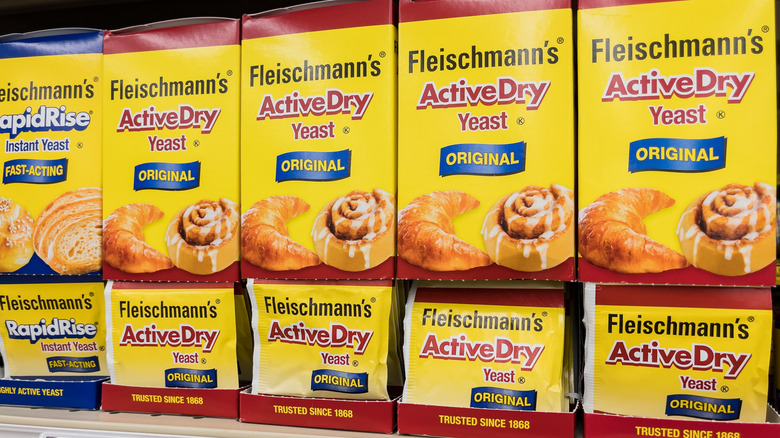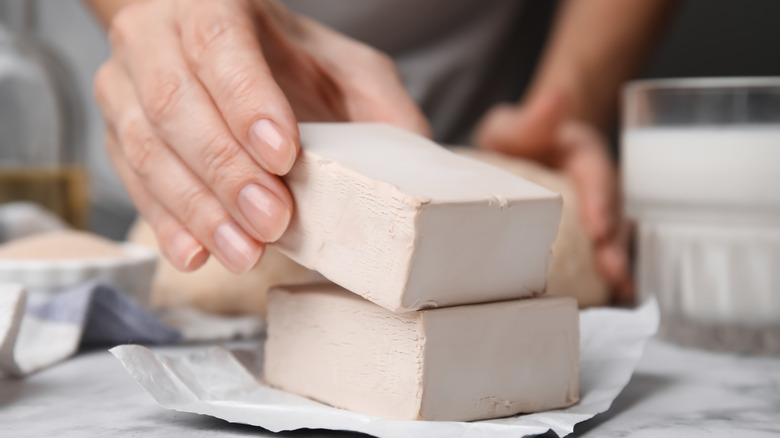How To Test Your Yeast Before You Bake (And Why You Need To)
If you're preparing to make bread or any other baked good requiring yeast, such as the classic Parker House rolls recipe, there's an important step you may not realize you need to do: test your yeast. Failure to do it is a risk that can result in wasted ingredients or a poor final product that is anything but the golden, fluffy treat you were expecting.
Yeast can go bad for various reasons — exposure to air and moisture, improper storage, or lost potency due to aging (using old yeast is one of the common mistakes people make with homemade pizza dough). Even if yeast is not yet past its expiration date, it can lose its viability, while an expired yeast can still be active and usable. So, before committing your ingredients to the mixing bowl, how can you know if your yeast is good?
A simple test, known as proofing, can soon tell you if your leavening agent is alive and potent. The type of yeast you're using determines which proofing method should be implemented.
Proofing active dry yeast and instant yeast
To proof active dry yeast, which is granulated, pour ½ cup of water that is between 90 and 110 degrees Fahrenheit into a measuring cup. Make sure your water isn't too hot — water that is at or too near the boiling point will kill your yeast, resulting in the yeast mistake that stops bread from rising. Stir and dissolve into the water the amount of yeast your recipe calls for, along with ½ teaspoon of sugar (you can also use honey or agave). Let the mixture sit for about 10 minutes; if the yeast is good, it will foam up to the 1-cup line, and you can proceed to use it. You can add the measuring cup's contents right into your mixing bowl and move forward with your baking, subtracting the half cup of water used for proofing from the recipe's called-for liquid. If the mixture doesn't foam, however, your yeast has gone bad and should be discarded and replaced.
These same steps can be applied to proofing instant yeast, also known as rapid-rise yeast, which is also a granulated product but of a finer consistency. The proofing difference is this instant type of leavening will foam much faster than active dry yeast, within just a few minutes as oppose to 10 minutes.
Proofing fresh yeast
The process of proofing fresh yeast — the kind that is purchased in blocks or cakes — is similar to testing its granulated counterparts but with some key differences.
Fresh yeast in cake form, also known as compressed yeast, is very prone to perishing, so to make sure it's viable, you should again dissolve sugar or one of the alternatives — a full teaspoon this time — into ½ cup of warm water that is no hotter than 100 degrees Fahrenheit and then crumble in the recipe's called-for yeast amount. After around 10 minutes, the liquid should become foamy and have a bread-like smell.
If your yeast passes the test, you can once again proceed to use it in your recipe, subtracting the test water from the total liquid amount. The exception to this is if the recipe calls for rehydrating the yeast, which is what the proofing does. In that case you should not deduct the testing water from the recipe's other liquid ingredients.



